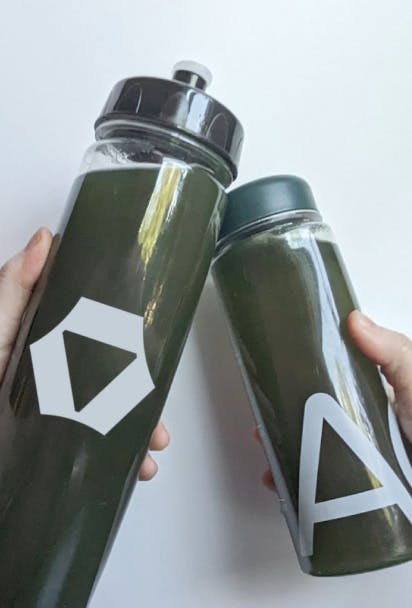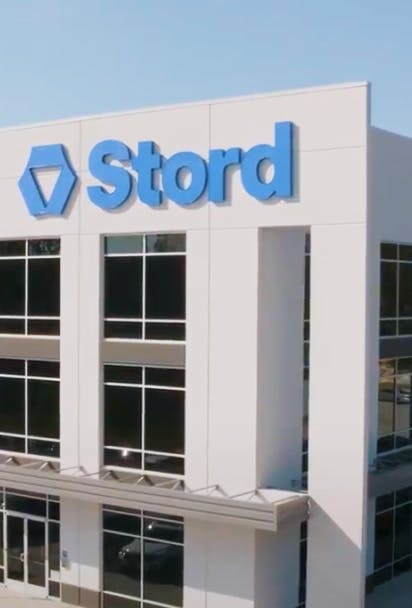Global online retail sales are projected to hit $7.4 trillion by 2030, according to Statista. While these numbers may change due to shifting global trade policy and consumer economic outlook, standing out from the e-commerce crowd is extremely critical. One huge potential differentiator is branded packaging.
Branded packaging is more than just having a container for your product and protecting it during shipping. It can be a strategic marketing tool that encompasses the materials, design, and messaging of your boxes and other packaging elements. This may include custom-printed boxes with your logo and colors, unique shapes and sizes, personalized inserts, and even the type of tape you use. It's about creating a cohesive and memorable brand experience from the moment your package arrives.
Data consistently shows the significant impact of packaging on consumer behavior.
A MacFarlace Packaging survey revealed that 61% of end consumers anticipate branded parcels with greater excitement and 41% are more likely to repurchase if the parcel comes in a branded box. Notably, 52% of buyers are driven to repeat purchases by premium packaging.
While the potential of branded packaging is undeniable, it's still crucial to examine the full picture. From cost and logistical considerations to the growing concerns of porch piracy, understanding the pros and cons of investing in branded boxes will help you make an informed decision for your e-commerce business.
Pros of Branded Boxes
For e-commerce businesses seeking to leverage branded boxes, here are several strategic advantages.

Increased Brand Presence and Recall
Compared to generic brown boxes, branded boxes can catch more attention and help solidify brand identity. A study published in the Journal of Marketing Research found that distinct visual elements, like color, typography, and imagery, can significantly boost brand recall, potentially by as much as 80%. Therefore, choosing to incorporate your logo, brand colors, and unique design elements onto your packaging can create a recognizable touchpoint that reinforces your brand with each delivery.
Better Customer Experience
The initial physical interaction with your product begins with the packaging. Branded packaging contributes to a positive unboxing experience, which leads to better overall customer experience. Criteo found that 68% of end-consumers say a positive unboxing experience makes them more likely to recommend a brand.
Free Marketing
A brightly branded box on a doorstep can signal to a local community of a highly desirable product that they may want themselves — never underestimate the power of “keeping up with the Joneses.”
Branded packaging can also lead to increased social media visibility. Customers are more likely to share photos and videos of their unboxing experiences when the packaging is branded and visually appealing. This organic sharing extends your brand's reach and can attract new customers through user-generated content.
Both scenarios can effectively serve as a form of free marketing.
Improved Parcel Costs
For brands with consistent order sizes or product kits, custom-designed packaging can significantly reduce carrier fees. By optimizing the box dimensions to minimize dimensional weight, eliminating unnecessary void fill (dunnage), and using lightweight yet durable materials, you can lower shipping costs.
For example, Seed implemented custom mailers that were perfectly tailored to their product. This strategic packaging design maintained a great unboxing experience and also resulted in substantial cost savings by reducing their shipping expenses. This approach demonstrates how branded packaging can be a brand enhancer and a cost-saving measure.
Cons of Branded Boxes
While the benefits of branded packaging are clear, there are also potential drawbacks.
Cost Considerations
Branded packaging involves initial costs for materials, design, and setup. However, strategic approaches, like using custom mailers or streamlined packaging, can potentially unlock savings on parcel costs. Therefore, a well-planned choice can optimize packaging and logistics, while still potentially lowering the overall expenses.
Logistical Challenges
If you decide to implement branded packaging with uniquely shaped boxes or custom sizes, it may require additional storage space and can complicate shipping processes. These challenges can lead to increased handling costs and potential delays in delivery. Additionally, non-standard packaging may increase shipping costs due to dimensional weight pricing.
Complicated Packout Process
Implementing branded packaging can introduce complexity into the packout process. If you offer a variety of branded box sizes or designs, effectively communicating which box to use for specific orders can be challenging. This complexity increases the potential for errors, such as using the wrong box size, which can lead to higher shipping costs or damaged goods.
A modern Warehouse Management Systems (WMS) like Stord provides step-by-step instructions with images to help reduce confusion, however for traditional providers the complexity of managing multiple packaging options can still lead to inefficiencies and increased training requirements for warehouse staff.
Potential for Design Missteps
A poorly executed branded packaging design can negatively impact customer perception. If the design is cluttered, unprofessional, or misaligned with the brand's image, it can detract from the overall customer experience. Therefore, investing in professional design services and conducting thorough testing with target audiences is necessary to avoid these pitfalls.
Increased Risk of Porch Piracy
Branded boxes can inadvertently increase the risk of “porch piracy” or the theft of packages left unattended on doorsteps. Distinctive branding makes packages more noticeable as it may suggest the presence of valuable items to opportunistic thieves. This heightened visibility can make your shipments a target, particularly in areas with known package theft issues.
Security.org found that porch pirates stole $12 billion in packages in 2024 and as many as 58 million Americans have become victims during that year. E-commerce businesses should consider implementing strategies to mitigate this risk. One way to do it is through shipment protection.
Stord Shipment Protection provides a financial safety net for stolen, lost, or damaged packages. It works by offering reimbursement or replacement to customers who experience these issues, thereby reducing financial losses for the business and enhancing customer trust in the delivery process.
Finding the Right Packaging Fit
E-commerce businesses have different packaging options to choose from, each with its own set of considerations. The best choice depends on your brand's specific goals, target audience, and budget.
1. No Branded Packaging
This involves using plain, generic boxes or mailers. It's often chosen by businesses that prioritize cost-effectiveness, operational efficiency, or a minimalist aesthetic. While it may not enhance brand visibility, it can be a practical solution for certain products or business models.
2. Fully Branded Packaging
This option involves extensive customization, including custom-printed boxes with logos, colors, and designs. It may also come with branded inserts and other elements. It's designed to create a strong brand experience and enhance customer engagement.
This approach is often favored by brands that prioritize brand building, creating a premium unboxing experience, and driving social media sharing.
3. Partially Branded Packaging
This approach offers a middle ground, combining elements of both no branding and fully branded packaging. It may involve using a generic exterior box with more branding elements inside, such as branded inserts or stickers. This approach can provide a balance between cost-effectiveness and brand visibility.
4. Dual-Purpose Packaging
This option involves packaging that serves both as the product's protective container and its presentation or storage solution. It eliminates the need for a separate inner box to reduce material waste and potentially lower costs.
Dual-purpose packaging enhances product value by providing a reusable and functional element. It can create a more sustainable and customer-centric approach.
Align Your Brand With the Right Packaging
The decision of whether to invest in branded packaging for your e-commerce business is not a simple yes or no. It's a thoughtful consideration that involves a deep understanding of your brand goals and the overall customer experience you aim to create. Still, we must acknowledge the power of packaging in shaping consumer perception and driving loyalty.
The “right” choice must strike a balance between the appeal of creating a memorable unboxing experience and the realities of cost, logistics, and security. Ultimately, your packaging solution should effectively represent your brand and resonate with your customers. Whether you opt for the simplicity of generic packaging, the brand-building power of fully branded boxes, the flexibility of partial branding, or the efficiency of dual-purpose solutions, the key is to make an informed and intentional choice.






